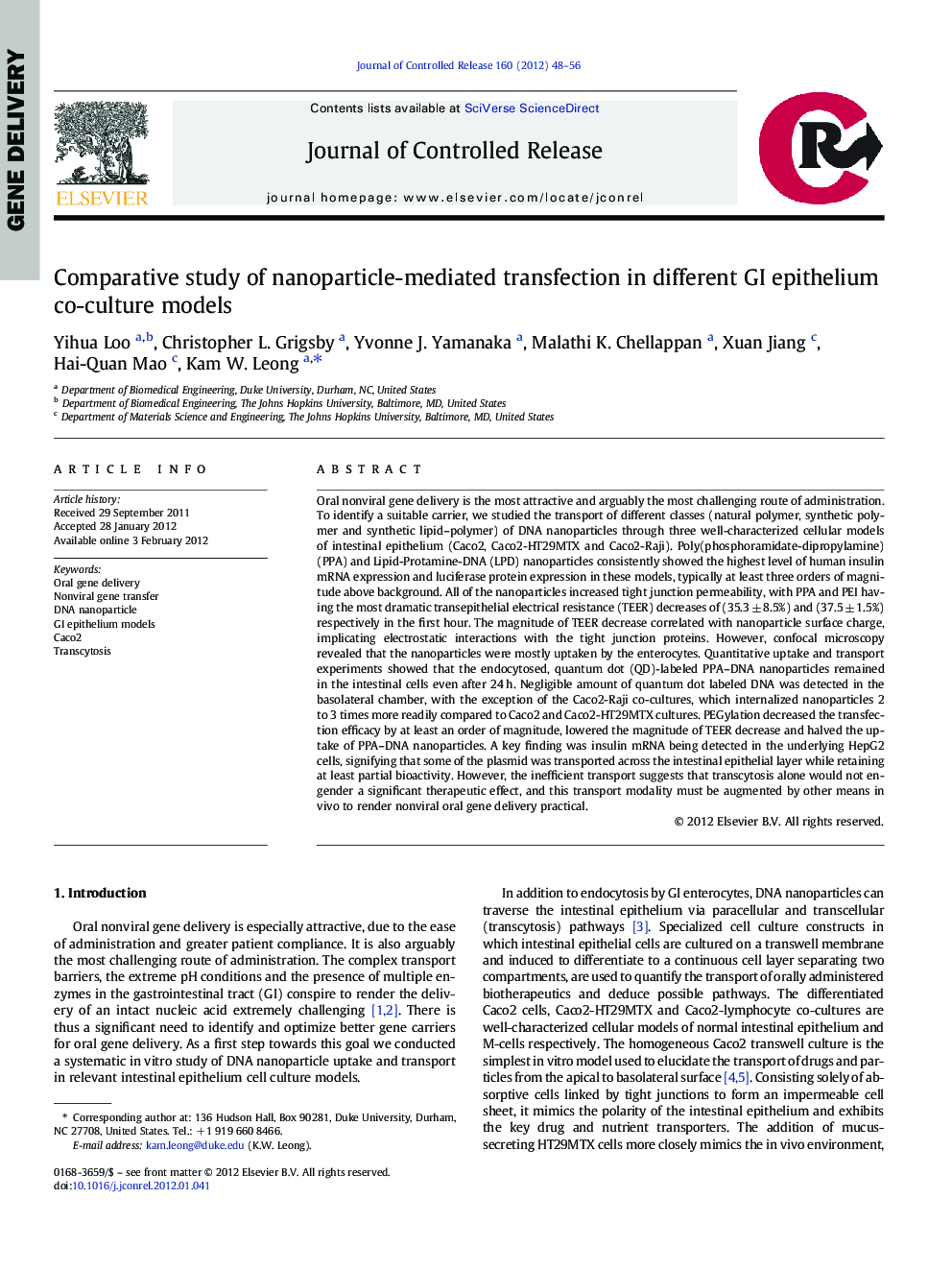| کد مقاله | کد نشریه | سال انتشار | مقاله انگلیسی | نسخه تمام متن |
|---|---|---|---|---|
| 1424655 | 986732 | 2012 | 9 صفحه PDF | دانلود رایگان |

Oral nonviral gene delivery is the most attractive and arguably the most challenging route of administration. To identify a suitable carrier, we studied the transport of different classes (natural polymer, synthetic polymer and synthetic lipid–polymer) of DNA nanoparticles through three well-characterized cellular models of intestinal epithelium (Caco2, Caco2-HT29MTX and Caco2-Raji). Poly(phosphoramidate-dipropylamine) (PPA) and Lipid-Protamine-DNA (LPD) nanoparticles consistently showed the highest level of human insulin mRNA expression and luciferase protein expression in these models, typically at least three orders of magnitude above background. All of the nanoparticles increased tight junction permeability, with PPA and PEI having the most dramatic transepithelial electrical resistance (TEER) decreases of (35.3 ± 8.5%) and (37.5 ± 1.5%) respectively in the first hour. The magnitude of TEER decrease correlated with nanoparticle surface charge, implicating electrostatic interactions with the tight junction proteins. However, confocal microscopy revealed that the nanoparticles were mostly uptaken by the enterocytes. Quantitative uptake and transport experiments showed that the endocytosed, quantum dot (QD)-labeled PPA–DNA nanoparticles remained in the intestinal cells even after 24 h. Negligible amount of quantum dot labeled DNA was detected in the basolateral chamber, with the exception of the Caco2-Raji co-cultures, which internalized nanoparticles 2 to 3 times more readily compared to Caco2 and Caco2-HT29MTX cultures. PEGylation decreased the transfection efficacy by at least an order of magnitude, lowered the magnitude of TEER decrease and halved the uptake of PPA–DNA nanoparticles. A key finding was insulin mRNA being detected in the underlying HepG2 cells, signifying that some of the plasmid was transported across the intestinal epithelial layer while retaining at least partial bioactivity. However, the inefficient transport suggests that transcytosis alone would not engender a significant therapeutic effect, and this transport modality must be augmented by other means in vivo to render nonviral oral gene delivery practical.
Polymer-DNA nanoparticles were able to protect the DNA, which retained bioactivity following transport across the monolayer and demonstrated long term expression. PEGylation decreases transfection efficacy and endocytosis.Figure optionsDownload high-quality image (234 K)Download as PowerPoint slide
Journal: Journal of Controlled Release - Volume 160, Issue 1, 30 May 2012, Pages 48–56